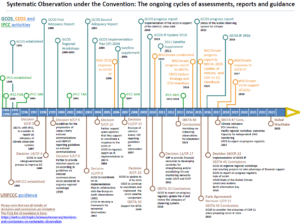Who should pay for climate damage?
Why in News?
At the G-20 summit in Bali, rich nations including the U.S, Japan, and Canada have pledged USD 20 billion to wean Indonesia off coal and reach carbon neutrality by 2050.
What is the Importance of Compensation?
- Between 1900 and now, developed countries have benefited from industrial development, which also led to Greenhouse Gas (GHG) emissions.
- Data from the Global Carbon Project shows that between 1751 and 2017, 47% of the CO2 emissions came from the U.S. and the EU-28. In total, just 29 countries.
- Developing countries were relatively late in starting out on economic development.
- They may be contributing to emissions now, but that is a weak reason to ask them to stop economic development.
- For Example: A farmer in rural Africa can claim that his country has not added to emissions historically, but because of the U.S. or Russia’s industrialisation, his agriculture yields are declining. Or an urban worker in South America has to work, without choice, in unforgiving heat wave conditions caused by the developed world’s emissions of the past.
What are the Consequences of the State of Emission?
- Emissions attributable to the U.S. over 1990-2014 caused losses that are concentrated around 1–2% of per capita GDP across nations in South America, Africa, and South and Southeast Asia, where temperature changes have likely impacted labour productivity and agricultural yields.
- But emissions may have also helped a few countries, such as those in Northern Europe and Canada.
- Moody’s Analytics estimates that by the middle of the century, Canada would see a rise in GDP of 0.3% as warmer climates spur agriculture and labour productivity.
- According to the UN Environment Programme’s annual emissions gap report for 2022 , the international community is falling far short of the Paris goals, with no credible pathway to 1.5°C in place.
Where about India’s Emissions?
- According to the ‘Emissions Gap Report 2022’, India is among the top seven emitters (others being China, the EU-27, Indonesia, Brazil, the Russian Federation and the U.S.).
- These seven, plus international transport, accounted for 55% of global GHG emissions in 2020.
- Collectively, G-20 members are responsible for 75% of global GHG emissions.
- Some GHG emissions are unavoidable. In the context of India’s population, its emissions are far lesser per head, than for others.
- World average per capita GHG emissions were 6.3 tonnes of CO2 equivalent (tCO2e) in 2020.
- The U.S. is way above this level at 14, followed by 13 in the Russian Federation and 9.7 in China. India remains far below the world average at 2.4.
What are the Related Steps by India?
- India announced that it will reach carbon neutrality by 2070.
- India has also committed to generate 500 GW of renewable energy capacity by 2030, bringing down emission intensity of Gross Domestic Product (GDP), as well as raising forest cover.
- In last year’s coal agreement, India drafted the language.
- It was changed from “phase-out” to “phase-down” of coal.
- It reflects the country’s ground realities of large energy requirements, met predominantly by thermal power, to spur economic development.
- It was changed from “phase-out” to “phase-down” of coal.
UPSC Civil Services Examination, Previous Year Question (PYQ)
- With reference to the Agreement at the UNFCCC Meeting in Paris in 2015, which of the following statements is/are correct? (2016)
- The Agreement was signed by all the member countries of the UN and it will go into effect in 2017.
- The Agreement aims to limit greenhouse gas emissions so that the rise in average global temperature by the end of this century does not exceed 2ºC or even 1.5ºC above pre-industrial levels.
- Developed countries acknowledged their historical responsibility in global warming and committed to donate USD 1000 billion a year from 2020 to help developing countries to cope with climate change.
Select the correct answer using the code given below:
(a) 1 and 3 only
(b) 2 only
(c) 2 and 3 only
(d) 1, 2 and 3
Ans: (b)





